Ammonites from Lyme Regis
Lyme is a classic place for ammonites. There are large examples seen lying on the beach to the west of the town. Because of the type of rock, they are impossible to remove and just lie there slowly being eroded by the tides.
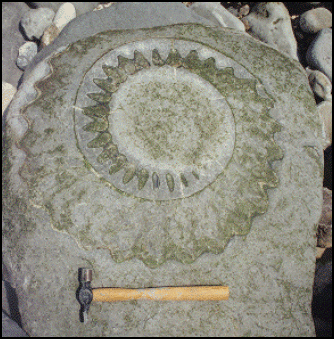
Large ammonite on Monmouth Beach, West of Lyme.
There are many smaller examples to be found in the rocks for a mile or two on either side of Lyme. A few hours searching will inevitably yeild many pieces in various states of preservation.
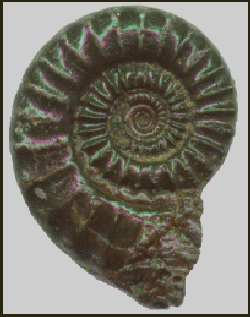
This is a well preserved example of Promicroceras planicosta. It is preserved in iron pyrites which is inherently instable when exposed to air so I have given it a coat of lacquer. Even this will not totally prevent decomposition and the sample will decay over time.
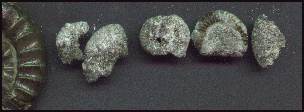
Decay of Ammonite fragments after several
years compared with lacquered specimen.

A particularly barren expedition left me gloomy and fossil-less so Hazel bought me this one, for my 35th birthday, from one of the more recent fossil purvayors in Lyme. It is also Promicroceras planicosta but preserved in calcite.
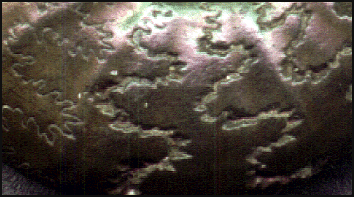
This is a fragment of an internal mould of of an ammonite. The beautifully convoluted suture lines are clearly visible.
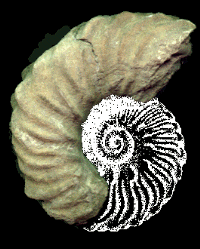
Although most of the ammonites from this area belong to the Jurassic, on occasions Cretaceous examples can be found. This is Euhoplites. Only the living chamber is intact and I have superimposed it on a drawing to give some idea of how the whole animal looked.
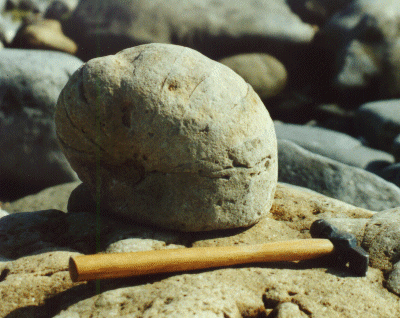
I must include this item in this section. Strictly it not an ammonite, it is a nautiloid. Fairly battered and lying among the rocks, this is a Cretaceous ancestor of the pearly nautilus. Because of the size of the specimen, I left it behind for someone else.









